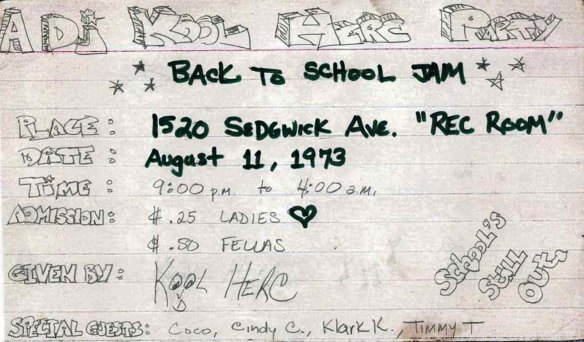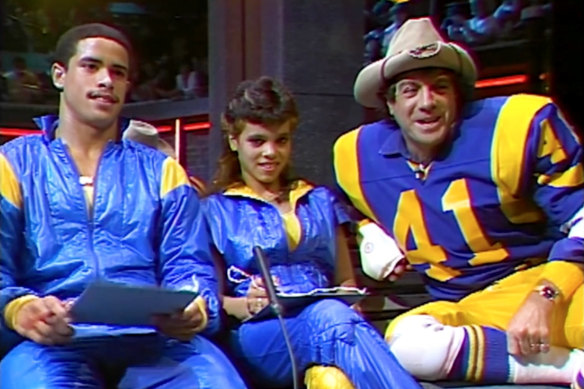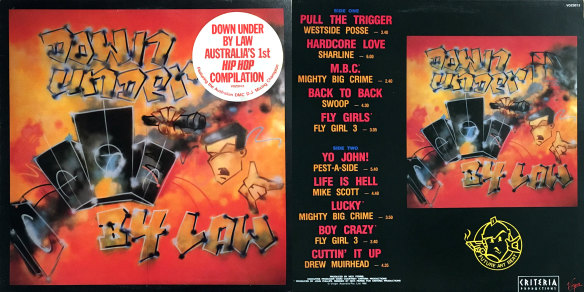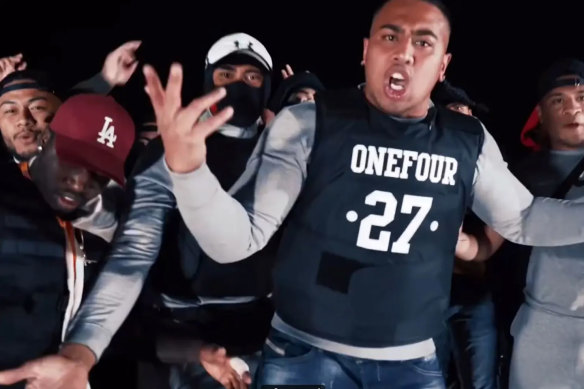Hip-hop is more than just music: it’s a global cultural phenomenon. And this year marks a half-century since the movement started in New York City and rapidly spread across the globe.
It took a long time to be adopted and understood by Australia. But if you go back four decades or so, you’ll uncover a vibrant and largely unknown history.
In this exclusive music documentary we spoke to some of the most influential artists from Sydney and Melbourne and gained unique insight into how the hip-hop scene exploded Down Under.
Hip-hop at its core incorporates four foundational elements: DJing/turntablism, MCing/rapping, B-boying/breaking, and graffiti.
The culture emerged in the early 1970s in the Bronx in New York City during a time of economic decline and urban despair. One of its most influential pioneers was DJ Kool Herc, a Jamaican immigrant regarded as a founding father of hip-hop.
DJ Kool Herc hosted a “back to school jam” with his sister Cindy Campbell, at 1520 Sedgwick Avenue in the south Bronx on August 11, 1973. During the party, Kool Herc debuted the “Merry Go Round” technique using two turntables. It was popular on the dance floor and quickly became key to the rise of rapping and breaking. This historic party is widely recognised to be the birthplace of hip-hop.

The original invitation for DJ Kool Herc’s “back to school jam” on August, 11, 1973.
It wasn’t until about a decade later that hip-hop found its way to Australia. The first elements of the culture to be embraced here were breaking and graffiti, not music.
The 1970s and ’80s were a pre-internet time, so it was music videos like Malcolm McLaren’s Buffalo Gals (1982), and American feature films that showcased all the elements of hip-hop that enabled Australians to see the culture for the first time.
One noticeable difference between the early era of hip-hop in Australia and now is the championing of all elements of the culture. To be considered a legitimate hip-hop artist in the 1980s and ’90s, you had to practice multiple elements.
Molly Meldrum was an early promoter of the element of breaking. When the legendary New York City breaking group Rock Steady Crew toured Australia in 1984, he hosted the “Beat Street competition” on Countdown. Breaking had become a pop culture phenomenon in Australia and the competition featured crews battling from all over the country.

Molly Meldrum watches the Beat Street competition with Rock Steady Crew on Countdown in 1984.Credit: ABC / Countdown
Graffiti was a very strong element of the culture in the early days of Australian hip-hop. It has remained one of the finest scenes in the world and several artists have received international acclaim over the past four decades. Melbourne grew into a street art mecca, boosting the city’s commercial and tourism industry.
In 1988, a number of graffiti writers and breakdancers started to become rappers and DJs and the Australian hip-hop music industry was born. The first song to be released is widely considered to be Combined Talent by Sydney group Just Us in 1988.
“They put the 808 drum machine on and just started rapping over the top. A bit of scratching and cutting; it was just so raw,” says DJ Peril, a founding member of 1200 Techniques, about the song.
Combined Talent was closely followed by an LP from the Park Bench Royals in Melbourne and Australia’s first hip-hop compilation Down Under By Law was also released the same year. The compilation was the first hip-hop album put out by a major record label – Virgin Records – and features some of the genre’s earliest artists from Sydney.

‘Down Under By Law’ was Australia’s first hip hop compilation released by Virgin Records in 1988.
It’s important to note that there wasn’t much mainstream love for hip-hop in Australia in the 1980s and ’90s and many groups made demos that were never released – it’s difficult to say who all the early hip-hop groups were or name every pioneer in the culture.
“At the beginning we were all just artists ourselves that were bouncing ideas off each other. We would go to gigs, and we knew all the other artists because it was a small community,” says MC and graffiti artist Mistery.
Bands such as 1200 Techniques, Lyrical Commission, Resin Dogs, Downsyde, Bliss n Eso, Koolism and Hilltop Hoods ushered in a new wave of hip-hop that brought mainstream success in the 2000s.
Melbourne’s 1200 Techniques were the first Australian hip-hop group to win an ARIA award in 2002 with their hit song Karma, before hip-hop was even given a category.
“We helped shine a light on making it [hip-hop] a commodity in this country. We were the first commercial crossover but you didn’t see all the squirming we did to get there, in the room upstairs with the head honchos of all the radio stations, rapping in front of them, trying to impress them. It was pretty hard. Somehow, we got over,” says DJ Peril.
Shortly after 1200 Techniques hit the mainstream, Hilltop Hoods became one of the biggest hip-hop forces in the country. The Adelaide trio have won numerous awards and had significant commercial success over the past 30 years.

Hilltop Hoods are one of the most successful hip hop groups in Australia.Credit: Fairfax
Indigenous and minority communities have also had a significant impact.
Hip-hop has been closely associated with minorities since its inception in New York City. First Nations people and immigrant communities have been at the forefront of the Australian hip-hop scene since its earliest days.
One of the most significant First Nations artists today is Baker Boy, from Arnhem Land. His track Marryuna, released in 2018, was the first song to make the Triple J Hottest 100 using an Indigenous language; Baker Boy is the first MC to hit the mainstream rapping in his native Yolŋu Matha tongue.
As hip-hop music has evolved, it has led to the offshoot of many sub-genres, and one of the most popular in our modern era is Drill: a music style known for its gritty beats and lyrics often associated with gangs, violence and crime.

Mount Druitt’s ONEFOUR started the hip hop sub-genre Drill in Australia.Credit: YouTube/OneFour
Western Sydney’s OneFour are credited with starting drill in Australia. Their music videos have clocked up millions of views and are receiving worldwide attention, but police believe drill music has fuelled tensions between rival gangs, and they have cracked down heavily on the sub-genre.
The evolution of all elements of Australian hip-hop has been explosive over the past 40 years. From the street corners to the world stage, hip-hop has grown into one of the world’s most prominent musical genres and cultural influences.